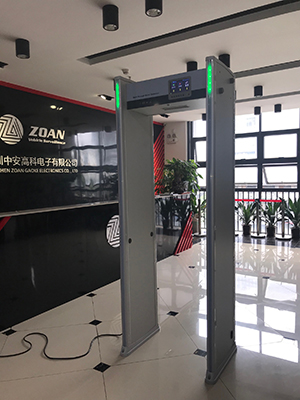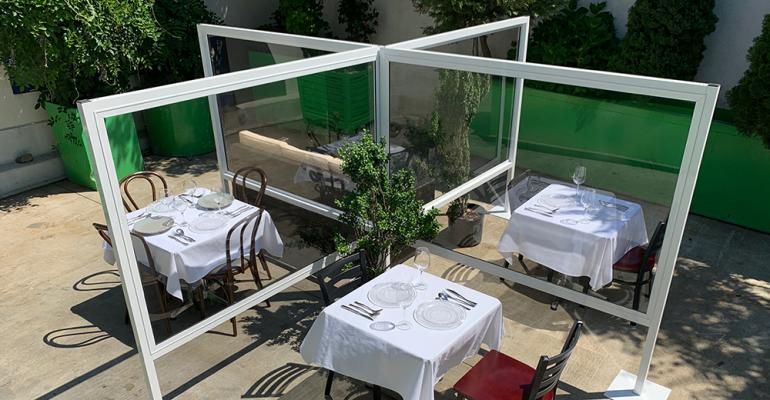Before COVID-19 began to completely reshape the restaurant industry, personal protective equipment, or PPE, was mostly relegated to basic gloves and hair nets for employees who would be in contact with food. Now, as workplaces around the country continue to deal with the effects of the global pandemic, masks, face shields, gloves and no-touch thermometers have become standard equipment for restaurants that want to survive, thrive and regain their customers’ trust.
Although customers assume that restaurants will be taking these safety precautions, how do operators — most of whom are already struggling after months of dining-room closures — take these costs into account? There are no easy answers, but there are smart ways to create a flexible budget.
Brooklyn Chop House — an American steakhouse/Chinese fusion restaurant in Manhattan — had to close completely for a time due to the pandemic, but planned to reopen by July 2 with full safety protocols in place, including $30,000 worth of enhanced and upgraded safety equipment like face masks, shields, table dividers, and a thermal scanner that was converted from a metal detector into a walk-through body-temperature scanner, which Brooklyn Chop House director of operations Stratis Morfogen said is a lot less nerve-racking than having a “temperature gun pointed at your forehead.”
 Morfogen also said that he has been advocating for the inclusion of PPE costs in revisions of the Paycheck Protection Program, but has not received much of a response.
Morfogen also said that he has been advocating for the inclusion of PPE costs in revisions of the Paycheck Protection Program, but has not received much of a response.
“We just took a huge financial hit [by closing the restaurant] and now we have to pay thousands of dollars for safety protocol?” Morfogen said. “It’s very expensive and thank God we can afford to do it […] When it came to creating the PPP, they had the right intention, but clearly the person who wrote the legislation was not a small business owner. They go to the guys with the million-dollar marketing caps for answers instead of the small mom-and-pop restaurants.”
 Photo: Metal detector turned thermal body temperature scanner at Brooklyn Chop House.
Photo: Metal detector turned thermal body temperature scanner at Brooklyn Chop House.
Credit: Brooklyn Chop House
Here’s how Morfogen breaks down the cost of PPE for both of his restaurants, Brooklyn Chop House and Brooklyn Dumpling Shop in the East Village. He pays $30,000 out of pocket for the thermal body temperature scanner (which cost $1,200 each from Chinese digital solutions company Zuan Technologies). Forty table dividers, which cost $300-$400 each, come from a company called Avant Guard. Much of the rest of the money is spent on face shields ($7 each), the non-collapsible “duckbill masks,” ultra-violet lighting that kills germs, disinfectant strips that turn a specific color when a surface needs to be cleaned, and disinfecting towels for customers to use between courses, as well as the standard sanitization and cleaning supplies.
“I am not factoring it into my budget, it’s just the cost of doing business in a post-COVID society,” Morfogen said. “I don’t think it’s fair for restaurants to [be] burden[ed with] this price before utilities and rent [covered under PPP]. Safety should come first and safety is not cheap.”
Morfogen did point out that certain amenities actually come at a cheaper price than they did pre-COVID-19 world.
“People used to spend thousands of dollars on menus and now we just spent $50 on a barcode,” he said, indicating that Brooklyn Chop House threw out their physical menus and now have a digital-only one.
But of course, prices of PPE vary based on the extent of protection operators invest in. In California, where face masks and face shields are both required for restaurant employees, restaurants have to use both as a baseline minimum for PPE requirements for their employees. The Village, a restaurant in Los Angeles, shut down their restaurant completely less than a month ago and is just now starting to reopen their dining room in guidance with California state regulations.
Between disposable masks and shields, owner Frank Leon said that he spends about $200 per month for 25 employees, with a case of face shields costing $10.99 from their provider, Bluestone Sunshields, a company that used to make fashionable sun visors but pivoted to protective gear during the pandemic. Leon said that using the shields has been easy because they’re reusable and it’s up to employees to clean them like they would their uniforms.
“At the beginning, cloth masks were a problem because they were marked up and almost impossible to get,” Leon said. “We started figuring out how we’re going to operate from now on. Everyone’s going to use different judgment, but I want to make sure I do right by protecting the public and my employees.”
Contact Joanna Fantozzi at [email protected]
Follow her on Twitter: @JoannaFantozzi





